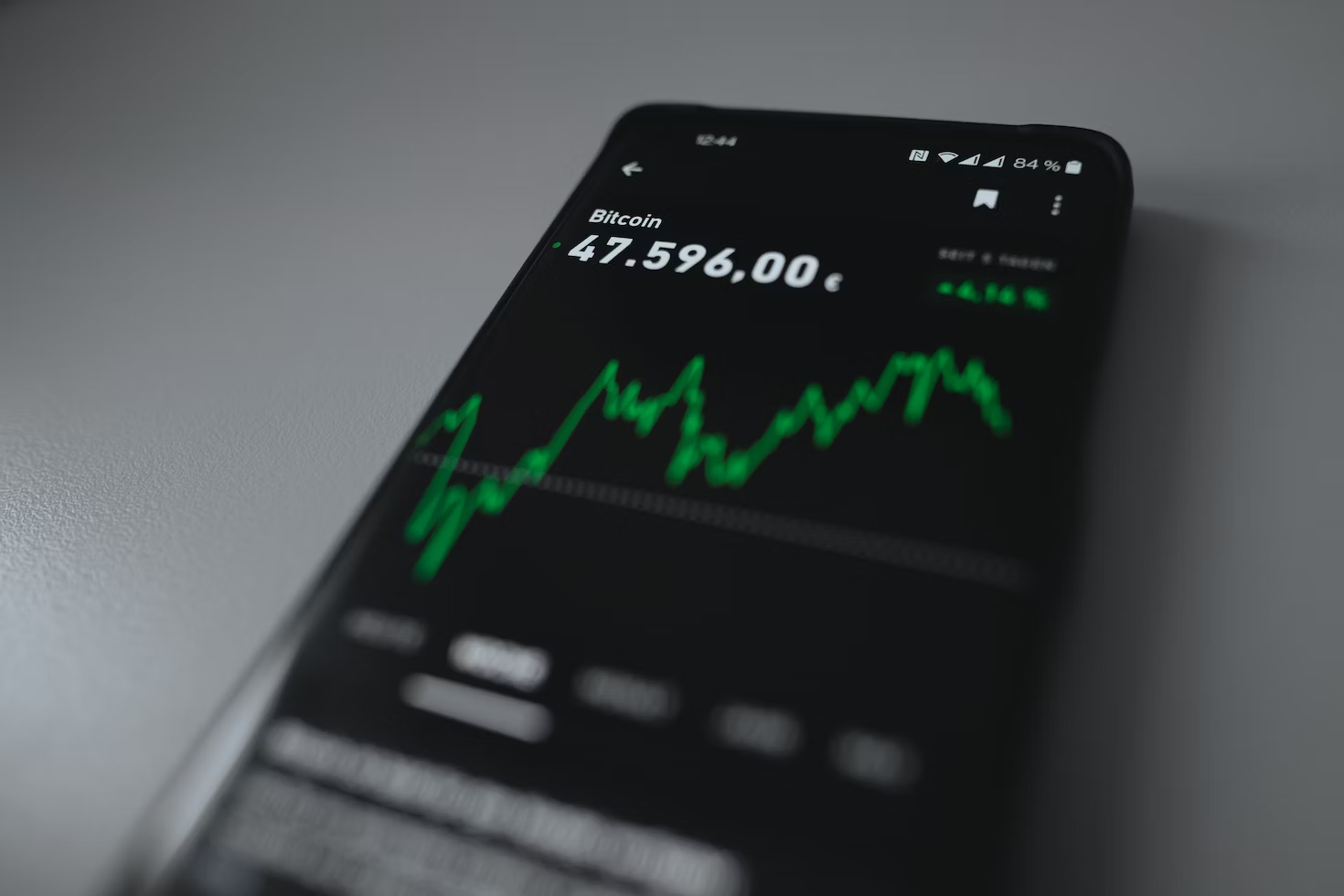Bitcoin
Bitcoin CPI
Venture Portfolio
Funds
Market Insights
Indicators
About
Contact

January 4, 2024





Bitcoin is no longer “just” digital money. The Bitcoin ecosystem has become home to a wide range of innovations, from DeFi and NFTs to token issuance.
Read on to learn more about Bitcoin’s latest use cases.
Bitcoin started as a peer-to-peer electronic cash alternative for the world of finance. Satoshi Nakamoto highlighted the issue of excessive trust placed in third parties, noting the hardships faced by individuals who have trusted these institutions.
The Bitcoin whitepaper was released in October 2008, and the first Bitcoin block was mined on January 3rd, 2009. Combining Nakamoto’s timing and his words in the whitepaper, it’s apparent that Bitcoin is supposed to be an answer to a failing system.
Bitcoin does not require a central bank because it represents a combination of nodes that form a decentralized network. Also part of this network are miners who are tasked with finding new Bitcoin blocks. The incentive to do so is the block reward, which halves every 210,000 blocks. The existence of specific rules ensures that Bitcoin cannot be endlessly generated, and there is a hard cap of 21 million coins.
On paper, Bitcoin looks relatively simple and thought out. The early days were very experimental. The currency was mined and spent by enthusiasts, cryptographers, or early internet adopters searching for an alternative to credit cards. A few realized Bitcoin’s potential early on and started treating it like gold. The similarities, namely scarcity, durability, and fungibility, were there, and the mentality of holding on to your Bitcoin and using it as a store of value emerged.
However, the more people started using Bitcoin, the faster it grew, and in 2016, new proposals emerged to scale Bitcoin. It became obvious that the main layer would not be scalable enough for 8 billion people.
Bitcoin layer solutions, such as the Lightning Network for payments, the Liquid Network for insurance and tokenization, or later solutions, such as Ordinals, resulted from this first wave of scaling development.
Bitcoin’s earliest adopters had a unique opportunity to either mine their Bitcoin using less expensive hardware than what is available today or they could mine significant amounts on hard-to-use open markets at a lower price.
The primary adoption was driven by two factors: online payments and remittances.
While a small group of investors realized the potential of Bitcoin as a store of value early on, most people within the community used it as an alternative to online payment services.
Back in 2010, services like PayPal had just emerged and were still relatively clunky to use or lacked seamless integration into digital realms compared to today. These services’ entry barriers were also insufficient for many early Bitcoin adopters, primarily developers and cryptographers.
Most of them were privacy-conscious and hesitant to trust third parties with their data. To them, the ability to self-custody and maintain control over one's funds, with as few privacy trade-offs as possible, made Bitcoin attractive.
On a small scale, then, Bitcoin emerged as an online payment alternative to Visa, MasterCard, or PayPal. This shift gained momentum, especially after incidents involving PayPal and Wikileaks, where the publishing house had to turn to Bitcoin for donations after being cut off by the payment provider.
This event marked a significant moment in Bitcoin’s history, making the cryptocurrency more widely known as a payment alternative. It was also one of the last events witnessed by Satoshi Nakamoto, as shortly after, the pseudonymous founder disappeared.
From then on, Bitcoin has had a shady reputation, as most users are said to have used it to prevent KYC rules or buy illicit goods. At the same time, it was still widely known as the go-to source for paying online.
While one portion of the community was busy using Bitcoin as an alternative for online payments, another closely looked to Bitcoin as a solution for a specific problem, namely remittances.
Up to that point, international money transfers could be executed, but often at significant costs to the sender. This was largely due to the necessity of using third parties with high fees, and the entire process was cumbersome, often taking weeks to complete a single transaction.
Lo and behold, Bitcoin arrived. While central banks govern each fiat currency with specific rules and procedures for international money transfers, Bitcoin lacks such constraints, enabling anyone to send money globally within minutes.
This was a game-changer for users who were used to sending portions of their salaries to relatives and families through remittances. Instead of incurring high fees or, even worse, using cash services and endangering the lives of their loved ones on the ground, they could now turn to Bitcoin.
Back then, on-chain transaction fees were minimal, and new blocks on the Bitcoin blockchain were frequently found within a few minutes. It became the perfect tool for exchanging local currencies into Bitcoin, sending it to families, and having them accept it a few minutes later.
Bitcoin also became the currency of the uprising, mainly in countries like China or Venezuela, where political pressure often forced citizens to find alternatives to send money back home to their families.

While the first adopters were cryptographers, developers, and tech-oriented people, more investors slowly emerged with each bull market cycle (in 2013, 2017, and 2021).
The narrative of holding onto your Bitcoin and investing over a long-time horizon became prevalent. In fact, those holding onto Bitcoin from halving to halving would emerge as the most profitable Bitcoin investors.
Because of these cycles and the long-term upward trajectory, many investors started referring to Bitcoin as a store of value instead of a highly speculative internet currency.
Due to its similarities to gold, many started calling Bitcoin ‘digital gold.’
Instead of engaging in selling or day trading, individuals started using Bitcoin as a hedge against hyperinflation, as a long-term asset on their balance sheet to protect their stock price, or simply as a savings tool.
One of the most famous examples is Michael Saylor with MicroStrategy, who leveraged the momentum from 2020 to 2023 to accumulate more than 155,000 BTC and protect his shareholders from a previously falling stock price.
Beyond the digital gold narrative, we witnessed the adoption of Bitcoin on balance sheets, not only by public companies like MicroStrategy but also by nation-states.
El Salvador made history as the first country in the world to declare Bitcoin legal tender in 2021. President Nayib Bukele took it a step further and announced the daily purchase of 1 BTC to add to the national treasury as a reserve asset. While he was the first to implement this strategy, there were pioneers before him who had the same idea but could put it into practice.
For example, back in 2020, Luzius Meisser, a board member of Bitcoin Suisse, proposed that the Swiss National Bank (SNB) should purchase Bitcoin as a treasury reserve asset, and two years later, he suggested buying 1 billion Swiss Francs worth of Bitcoin every day.
Besides Bitcoin's use as a reserve asset or store of value, there has been a notable rise in the development of scaling solutions.
The most significant one to date is the Lightning Network, which operates as a secondary layer on Bitcoin. It enables microtransactions in Satoshis (called sats), the smallest unit in Bitcoin, and allows peers to settle their payments instantly.
Not only is this a great solution for international trade, remittances, or bringing Bitcoin into everyday situations, but it is also a great technology to enable further development in the Bitcoin ecosystem. Lightning doesn't just facilitate the instantaneous sending and receiving of Bitcoin; it also provides a robust platform for tokenized assets.
Projects like Taproot Assets, which we previously wrote about, bring fiat currencies to the Bitcoin ecosystem and allow everyone in the network to use it as a settlement layer.
Compared to current payment networks such as Visa or MasterCard, the Lightning Network is also significantly cheaper and faster to implement.
A significant change has picked up speed starting at the beginning of 2023. Although inserting information into a Bitcoin transaction was technically possible before, the scope was limited due to technical constraints.
Such constraints have been overcome with the introduction of the Ordinal Theory. With it, developers can inscribe information directly onto the Bitcoin blockchain and use it as a permanent record. The outcome of this development is the creation of Ordinals.
Bitcoin Ordinals are non-fungible tokens (NFT) with image or video data attached. This has sparked the creation of new marketplaces in Bitcoin this year, with many prominent NFT projects taking off.
However, Ordinal Theory also enables tokenization on top of Bitcoin. Other than tokenization on Lightning, with the Ordinal Theory, developers can use inscriptions to create fungible tokens as well. This has become possible thanks to Ordinal Theory-inspired protocols such as BRC-20.
While many of these projects are still in the early stages, they prove that Bitcoin has other use cases and that it doesn’t have to be a currency or settlement layer only.
Bitcoin's journey from its early days as a peer-to-peer electronic cash alternative to its current status as a store of value and innovative platform for scaling solutions and tokenization has been remarkable.
The emergence of Ordinals, facilitated by the Ordinal Theory, showcases its evolution into versatile assets, supporting NFTs and enabling tokenization. This could spell trouble for alternative smart contract blockchains that were mainly created for these use cases that have not been possible on Bitcoin but are now.
From international money transfers to becoming legal tender in nations like El Salvador, Bitcoin has diversified its utility beyond a mere currency, proving its adaptability and potential for a wide array of uses in the evolving financial landscape.